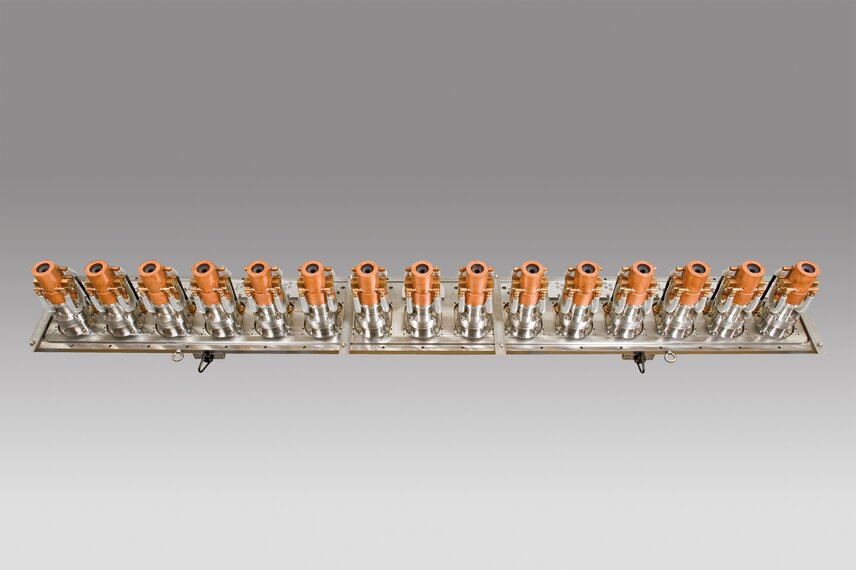The Fraunhofer Institute for Organic Electronics, Electron Beam and Plasma Technology FEP uses magnetrons and hollow-cathodes as plasma sources for research advantages in the area of high-rate coating solutions. The institute improves PECVD processes by the optimization of productivity and efficient application in roll-to-roll coating equipment. These processes provide large-area, cost-effective coating of flexible substrate material.
Wearables, arched displays and buildings facades increasingly require bendable, flexible surfaces with tailored functionality and properties. These coating functionalities include the reduction of gas permeation, protection against chemicals, radiation, and mechanical contact as well as conductive coatings and layers with specific optical properties. Surfaces are equipped with thin functional layers to achieve these properties and functionalities. Increasing productivity and efficiency of these coating processes is an important focus of the applications-oriented research. One of these deposition technologies is plasma-enhanced chemical vapor deposition - PECVD.
Fraunhofer FEP is active in the field of improved PECVD processes for high productivity and efficient application in roll-to-roll coating equipment. These processes provide large-area, cost-effective coating of flexible substrate material. In contrast to conventional processes, Fraunhofer FEP employs magnetrons and hollow-cathodes as plasma sources. Dynamic coating rates of up to 3000 nanometers for 1 meter per minute web-speed have been attained for plasma polymer layers. This figure is about five to ten times higher compared to conventional processes like microwave PECVD. Plasma polymer layers deposited upon functional layers offer good protection against chemical attack (acids and salts) and against mechanical loading such as found in winding equipment when materials undergo additional roll-to-roll processing.
It was shown that the water vapor transmittance of an inorganic barrier coating can be reduced by up to 50% by in-line deposition of a polymer-like protective layer. This process allows for the deposition of tailored layer’s properties (composition, hardness, and refractive index) without losing the possibility to tune the dynamic coating rate within prescribed limits. In combination with sputter processing for example, this facilitates in-line deposition of multiple layers in a single pass for optical interference coating systems, saving process steps and therefore money.
The researchers see the next goal to be further improvement of both the process and the layers for various application scenarios, such as in flexible electronic components.
Contact: Ines Schedwill, Fraunhofer FEP
Ines.schedwill@fep.fraunhofer.de